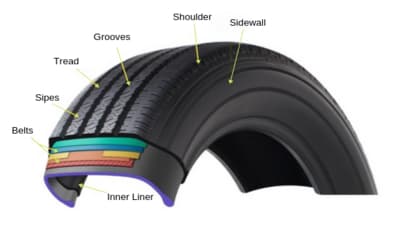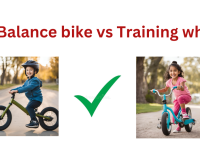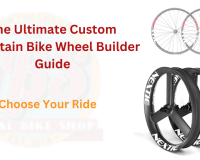Various circumstances have been taken into consideration when designing mountain bike tyres. Because these rubber casings are the only contact point between your ride and the ground. From riding skills to improving comfortless, it depends on the quality of bike tyres. A good mountain bike tyre can create a significant difference in your riding experience, whether you’re out for a casual ride or entering your local race. Likewise, they can also be highly durable, lasting for months at a time without a puncture. In the wrong hands, you are likely to experience a languid ride or, worse, no grasp when you need it the most.
Thus, knowing the factors that are mainly important for mountain bike tires will be the best thing that one can do.
Parts of Tyre and its role
Your mountain bike is, without a doubt, the best. Each part of the Tyre plays each role during braking, acceleration, handling, and comfort. As a result, it can work well on a dry road as well as on wet roads due to its good grip.
1. Beads:
Bundles of tire beads secure the tire to the rim or the wheel’s outer edge. Each Tyre contains two bead wires surrounded by a layer of a textile carcass. Beads are made up of copper, brass, or bronze-plated high tensile steel wires wound into a rubber band. The rubber around the bead area is usually a tough and durable compound. That will help withstand the rigours of mounting the tire to the wheel. The prominent role of the bead is to prevent the tire from sliding out of place when the wheel rolls.
2. Bead Filler
Bead filler is a profiled rubber layer that stiffens the bead seat and ensures that the beading wire remains in place. Bead Filler is responsible for the wear life of a tire and its steering behaviour and driver comfort. In case to measure a tire’s performance characteristics, the density and stiffness of a tire’s bead filler play a vital role.
3. Tire Casing
Tire Casing is a part of Tyre that includes the Bead, Sidewall, Body Ply, and Inner liner. Most of this Tire Casing is multi-ply and incorporates polyester, nylon, or rayon cords within the casing rubber compound.
4. Tread
While manufacturing Tyre, Tread is placed on top of the belt system. The Tread mixture includes both synthetic and natural rubbers. Usually, it contains two rubber compounds: tread base and tread cap. Tread base is made for an abrasion-resistant, higher-grip. This will further work with the tread base and design to provide traction and mileage. To sum up, Treads are designed to ensure good steering behaviour, adhesion, wear resistance, and good turning behaviour.
5. Sidewall:
The sidewall is an area of Tyre from the bead to the tread and treads to the side of the tire. It is also a part of a tire exposed to the environment and does not come in contact with the road. Sidewall compounds are made to damage from ozone, cuts, and snags. Thus, it protects cord plies; provides a reduction of both Tyre rolling resistance and the volume of tyre noise. It should have higher strength and good heat dissipation properties for a good life of Tyre.
6. Inner liner
The inner liner is a specific rubber compound used as an air seal inside the tire. It has no cord reinforcing, it is similar to an inner tube. Liner is designed to oxidize agents, acids, and alkalis. Inner Liner has high tolerance, protecting internal elements against air, ozone, and water ingress.
Which mountain bike tyre bears how much weight?
Tires vary in size, type, and other parameters, and that’s why the weight of a tire is usually somewhere between 6.5 and 80 kilograms. Before knowing which bike tyre holds how much weight, it is most important to know which parts of the structure weigh the most, though? Can heavier models bear more weight? What do Tyre weight and performance have in common?
For more information, visit this article on bike tyres and bearings.
Schwalbe Magic Mary tyre
Schwalbe Magic Mary is regarded as the best front Tyre for its mixed condition. These 2.35in Magic Mary blows up bang on size, with a very aggressive tread rocking pumped-up, reinforced edge blocks. Magic Mary can be used in All-mountain/trail/Enduro/downhill mountain bikes. The tyre size comes in 26, 27.5, and 29-inch sizes. Similarly, the Magic Mary tyre weighs around 795g, 1045, or 1190g depending upon the carcass.
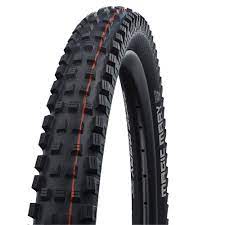
Image: bike-discount.de
WTB Verdict
WTB Verdict is also regarded to be also the best front tire for mud. This tire has also earned a good reputation for being tough and durable. This Tyre weighs around 1280g depending upon Carcass. Outwardly, they might look a little skinny, and the latest internally broader rims might cause them to get stretched a little on the sides.
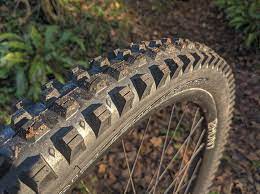
Image: pinkbike.com
Kenda Hellkat Pro ATC tyre
Kenda Hellkat Pro ATC tyre has a widely spaced, blocky tread with softer durometer shoulders and a firmer rolling strip. In this Tyre, the tread is an open, motocross-style affair with pretty aggressive edge knobs and a mostly uninterrupted shoulder channel. The Tyre comes in 61 mm size while around 851g.
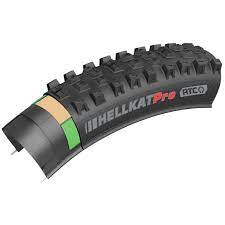
Image: bike24.com
Schwalbe Hans Dampf II Tyre
This is another best rear tire that is a dry trail. It is improved over the Mk1 version and pairs well with a Schwalbe Magic Mary up front. This tire’s Tread is 50 per cent bigger, with more spaced-out knobs for faster mud clearing and more bite. As of now, this massively improved Hans Dampf is only available in the softer, grippier ADDIX Soft blend in 2.35in sizes. Suppose you go for thicker 250g or so heavier, Super Gravity casing, though, for riding hard or racing on rocks, as the SnakeSkin casing is pretty lightweight.
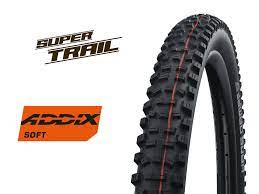
Image r2-bike.com
How to change mountain bike tyres?
There may be times when this mountain bike tyre needs to be changed, whether you’re on the trail or in the driveway. Your riding experience for the day could end with a misplaced nail, a sharp stone, or a thorn. If you got into something like that, don’t panic; you can just follow a few steps to change your tires and do the job.
There are two main ways to change a mountain bike tire, and each one depends on your resources at the time. You can just change the inner tube entirely or repair the puncture and reinsert the tube.
If you are in this ideal situation, you can follow these steps.
- Removing the Wheel
- Getting the Tire Off
- Check for Sharp Objects
- Replacing the Tube
- Fixing the Puncture
- Putting the Tire Back On
- Pump it Up
i. Removing the Wheel
The most important first thing you need to do to deal with a puncture is to remove the wheel, then after you can remove those nuts or disengage the brakes from that tire.
II. Getting the Tire Off
After removing the wheel, you need to get the Tire off from the rim. You need a tire lever to do this, so make sure you carry one with you whenever you ride. While removing, don’t forget to remove the screw locking ring if your tubes have one.
iii. Check for Sharp Objects
After getting off the tire, you have to determine whether it is janky on the rim that could have caused your flat. So be careful with the rim tape, as it covers spoke connections inside the rim, and replace as necessary. Check whether there are thorns or other sharp objects inside the tire by running your hand through it. You’re likely to damage your tire if something causes you to bleed.
iv. Replacing the Tube
Following the procedure, you will be ready to replace your new tube with just enough air to give it some shape. Then place the tube completely inside the tire like a hot dog in a bun. So, to insert a tube, find the valve hole on your wheel and place the valve stem in the hole.
v. Fix the Puncture
As you replace a tube, start working one side of the tire onto the rim. You should be able to use your hands for most of it; once you’ve made your way around most of the tire you may need to use your levers for popping the tire wall bead inside the rim. Repeat for the other side. S0 checked whether the tube isn’t pinched between the rim and the tire
vi. Put the Tire Back On
After fixing the puncture, start at a known point on the tire and work your way around the tyre, looking for pinches. If you get back to our start point, then flip back the tire and check the other side all the way around.
vii. Pump it Up
Now, lastly, you are ready for pumping. With enough pressure, you can inflate your new tire. The gauge that has more than 30-60 psi is better for mountain bike tires, but it’s really up to you. Keep low pressure if you want to have a squishy ride. Meanwhile, if you want to go for a hard ride, higher pressure will help you go faster.
We assume you have followed all these necessary to change your mountain bike tire. Changing a bike’s tires is often similar to changing tires on other vehicles. Therefore, these techniques gets used with fixies, cruisers, and road bikes.

